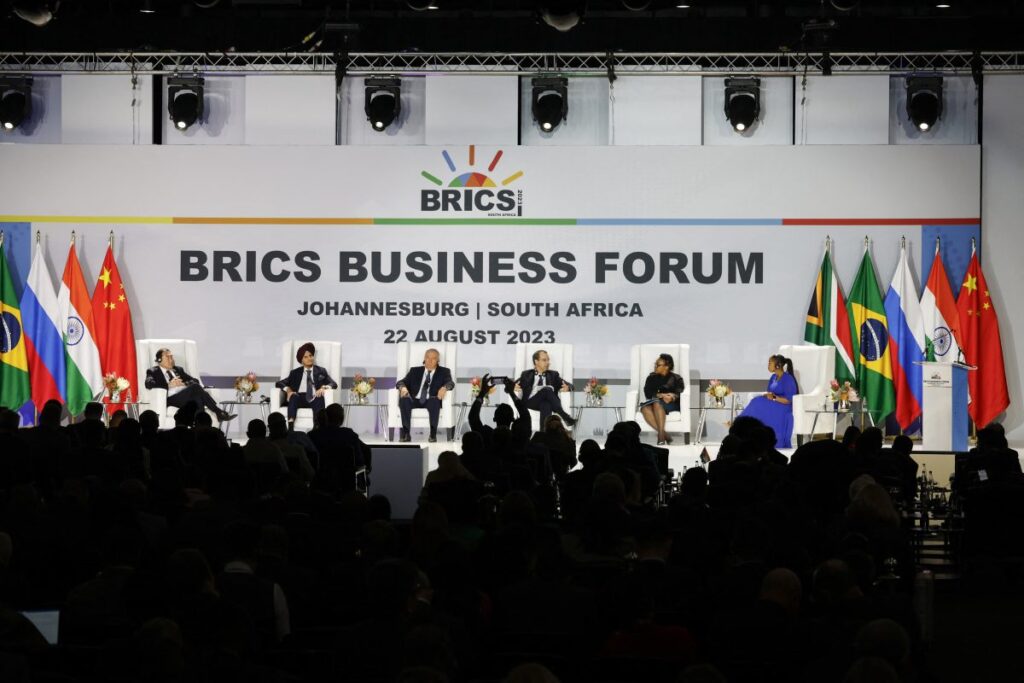As the BRICS countries hold their 15th summit in Johannesburg, expansion of the bloc is high on the agenda. Will we see the geopolitical map redrawn before our eyes?

August 22nd, 2023Opinion/ by Dr. Hippolyte Fofack
In 2001 Jim O’Neill, then an economist at Goldman Sachs, coined the acronym ‘BRIC’ in reference to Brazil, Russia, India, and China. He singled out these countries as fast-growing, populous emerging markets at similar stages of development with the potential to disproportionately shape the future of the global economy.
The four countries formalised their relationship in 2010 and on Christmas Eve at the end of the first decade of the new millennium, South Africa was invited to join the group. O’Neil, the father of the acronym, believed the country was too small an economy to include, but the geopolitical significance of expanding the continental coverage to Africa is only now outlining the structure of a new world economic order. South Africa’s accession added another letter to the acronym, establishing what we now commonly refer to as BRICS.
The BRICS group has come of age in the years since, emerging as the foremost economic rival to the G7 bloc of leading advanced economies with the potential to fast-track the transition to a multipolar world.
Growing economic heft
The BRICS countries have overtaken the G7 in terms of their contribution to global GDP, with the group now accounting for almost a third of worldwide economic activity measured by purchasing power parity. This position is growing and, according to the most recent estimates from the International Monetary Fund (IMF), China and India together are forecast to generate around half of global





Comments (2)
I will immediately snatch your rss feed as
I can’t find your e-mail subscription hyperlink or e-newsletter service.
Do you have any? Kindly permit me recognise in order that I may just subscribe.
Thanks.
I need to to thank you for this good read!!
I absolutely loved every little bit of it. I have
you saved as a favorite to check out new things you